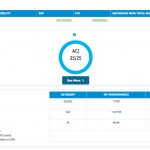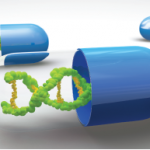According to the “2015 American College of Rheumatology Workforce Study: Supply and Demand Projections of Adult Rheumatology Workforce, 2015–2030,” the demand for rheumatologic care is projected to exceed supply of clinical adult rheumatology providers by 4,133 clinical FTEs by 2030. The research now being published estimates the baseline adult rheumatology workforce, as well as determined demographic and geographic factors relevant to the workforce. The research also highlights the need for innovative regional strategies to manage future access to and reduce barriers to care for rheumatology patients in underserved regions…

Rheumatology Research Foundation Welcomes New President, VP
The Rheumatology Research Foundation has appointed Abby G. Abelson, MD, with the Cleveland Clinic to serve as president. She begins a two-year term alongside the new vice president, S. Louis Bridges Jr., MD, PhD, with the University of Alabama at Birmingham (UAB). Drs. Abelson and Bridges are highly accomplished leaders in the field of rheumatology…

Providers Using RISE Have Advantage with 2017 MIPS Reporting
Hundreds of rheumatology providers across the country are finalizing submissions for the first year of reporting under the Merit-Based Incentive Payment System (MIPS). According to a presentation at the 2017 ACR/ARHP Annual Meeting in San Diego, providers that participate in and submit through the Rheumatology Informatics System for Effectiveness (RISE) Registry are poised to perform…
The Science Behind Biosimilars
Although six biosimilar agents have now been approved by the U.S. Food & Drug Administration for use in rheumatology, scientific, clinical, economic and prescribing questions about the use of biosimilars abound. In fact, at the 2017 ACR/ARHP Annual Meeting in San Diego, Joseph Huffstutter, MD, a rheumatologist in private practice in Chattanooga, Tenn., said that…

Chronic Pain Research Probes Neurologic Pain Pathways, Biomarkers
With the aid of increasingly sophisticated neuroimaging technology, research into how the brain activates and changes in patients with chronic pain is delivering fascinating information that will hopefully pave the way to tailored, individual treatment of chronic pain. Over the past several years, data from neuroimaging studies have provided a new understanding of what occurs…

DADA2 Research Reveals Mechanisms & Possible Gene Therapy
SAN DIEGO—An increasing number of patients is being identified with deficiency of adenosine deaminase type 2 (DADA2); fortunately, researchers and clinicians continue to better understand the genetic disease as well, experts said in a session at the 2017 ACR/ARHP Annual Meeting Nov. 3–8. The childhood-onset disease involves loss-of-function mutations to the CECR1 gene (i.e., cat…

Charity Navigator Gives Rheumatology Research Foundation Top Rating
Charity Navigator, America’s largest and most-utilized independent evaluator of charities, has awarded the Rheumatology Research Foundation its ninth consecutive 4-star rating. The prestigious 4-star rating is the highest possible rating given and is based on good governance, sound fiscal management and commitment to accountability and transparency. “The Rheumatology Research Foundation is proud to receive this…
Submit MIPS Data to the CMS via RISE by March 2
If you have not done so already, you may submit your 2017 MIPS data to the Centers for Medicare and Medicaid Services (CMS) starting today. Log in to your RISE dashboard, click on all the MIPS categories you would like to report through RISE, and then click on the Submit button. The deadline to submit…
Family Planning Counseling & the Rheumatologist
Women with rheumatic diseases have unique reproductive health needs, and family planning counseling is a critical component to their overall healthcare. A new research review examines the barriers to patients with rheumatic disease receiving family planning counseling. Additionally, reviewers provide rheumatologists with practical suggestions to optimize communication with patients, as well as address the effect of medications and the effectiveness of contraception…
RISE Readiness for MIPS in 2018
In 2018, all providers will have to submit an entire year’s worth of their quality measure data to the CMS. After 2017, the transition year, the requirements and performance thresholds begin to increase. The CMS is still heavily incentivizing participation in a Qualified Clinical Data Registry (QCDR), such as the RISE registry, for reporting in…
- « Previous Page
- 1
- …
- 38
- 39
- 40
- 41
- 42
- …
- 129
- Next Page »